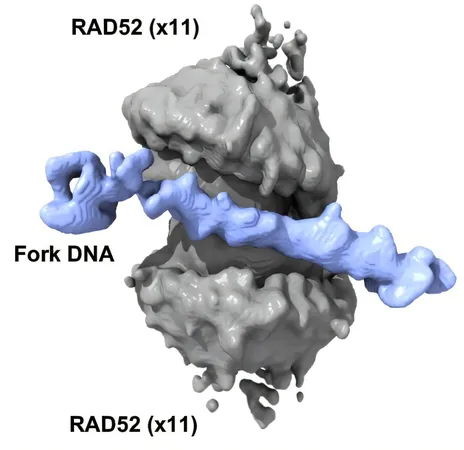
Hubble Space Telescope Captures Stunning Image of NGC 4941: What This Means for the Universe!
2025-03-31
Author: Ming
Introduction
In an extraordinary feat of cosmic photography, astronomers using the NASA/ESA Hubble Space Telescope have unveiled a breathtaking new image of the spiral galaxy NGC 4941, a spectacular spiral galaxy situated approximately 67 million light-years from Earth in the constellation Virgo.
Discovery and Identification
Known by multiple identifiers including AGC 530009, IRAS 13016-0516, LEDA 45165, and UGCA 321, NGC 4941 spans an impressive 60,000 light-years. Its discovery dates back to April 24, 1784, thanks to the pioneering work of German-British astronomer William Herschel.
Galaxy Groups
Contextually, NGC 4941 belongs to two significant groups of galaxies: the NGC 4941 group and the NGC 4697 group. These groups indicate the interconnectedness of galaxies and provide insights into galaxy formation and evolution.
Importance of the Discovery
Astronomers have hailed this discovery, stating, “Because this galaxy is nearby, cosmically speaking, Hubble’s keen instruments are able to pick out exquisite details such as individual star clusters and filamentary clouds of gas and dust.” This level of detail helps scientists understand ongoing stellar processes within the galaxy.
Stellar Feedback and Star Formation
Remarkably, the data used to create this stunning image was part of a broader observational program aimed at investigating star formation cycles and how stellar feedback influences nearby galaxies. As stars emerge from dense, cold gas clumps, they significantly impact their neighborhoods. This process, called stellar feedback, is crucial in shaping how a galaxy generates new stars.
Active Galactic Nucleus (AGN)
But that’s not all! At the core of NGC 4941 lies an active galactic nucleus (AGN) — a supermassive black hole consuming gas at a frenetic pace. As gas spirals toward the black hole, it forms a superheated accretion disk, which emits radiant energy across various wavelengths, illuminating the cosmos.
The Impact of AGN
The presence of an AGN highlights an intriguing duality: just like newly formed stars, these supermassive black holes influence their environments through radiation, powerful jets, and winds. This interplay plays a vital role not only in star formation but also in the broader evolutionary trajectory of the entire galaxy.
Conclusion
Such breathtaking images and findings remind us of the universe's incredible complexity, furthering our understanding of how galaxies, including our Milky Way, interact and evolve. Stay tuned for more thrilling discoveries from the Hubble Space Telescope as we continue to unravel the mysteries of the cosmos!





 Brasil (PT)
Brasil (PT)
 Canada (EN)
Canada (EN)
 Chile (ES)
Chile (ES)
 Česko (CS)
Česko (CS)
 대한민국 (KO)
대한민국 (KO)
 España (ES)
España (ES)
 France (FR)
France (FR)
 Hong Kong (EN)
Hong Kong (EN)
 Italia (IT)
Italia (IT)
 日本 (JA)
日本 (JA)
 Magyarország (HU)
Magyarország (HU)
 Norge (NO)
Norge (NO)
 Polska (PL)
Polska (PL)
 Schweiz (DE)
Schweiz (DE)
 Singapore (EN)
Singapore (EN)
 Sverige (SV)
Sverige (SV)
 Suomi (FI)
Suomi (FI)
 Türkiye (TR)
Türkiye (TR)
 الإمارات العربية المتحدة (AR)
الإمارات العربية المتحدة (AR)